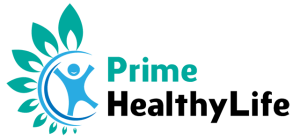To begin a complete liquid diet, you must only consume fluids or foods that become liquid when heated to room temperature or the warmth of your own body. A liquid diet may be prescribed by your doctor for various reasons, such as digestive problems or in preparation for a colonoscopy.
In this article, the risks and benefits of liquid-only diets are discussed, as well as the situations under which doctors may prescribe them. A complete liquid diet plan includes a list of items that are allowed and those that are not.
Benefits of maintaining a full liquid diet
You may be prescribed a liquid-only diet by your doctor if you have trouble swallowing or chewing solid food (dysphagia).
As a precaution, your doctor may advise you to maintain a liquid diet if you have any open sores or stitches in your mouth. Until the wounds have healed, you must consume plenty of fluids. This will aid in healing your mouth and prevent food particles from being lodged in the crevices and triggering an illness. 1
In addition, if you’ve recently had dental work done or suffered a jaw injury, not having to chew as much can help ease your pain.
Liquid diets can help you manage pain and avoid issues such as intestinal blockage that can be highly uncomfortable if your digestive system is slow or impaired due to illness, disease, or surgery (bowel obstruction).
Some tests and imaging procedures that allow you to see inside your stomach and intestines may need you to go on a liquid diet before the operation. The result could be affected if food is left in your gastrointestinal (GI) tract that hasn’t been digested.
To prepare for medical procedures that necessitate general anesthesia, a liquid diet may also be necessary.
Compared to solid foods, transparent liquids such as water and apple juice are quickly digested and out of the stomach within 10 to 20 minutes. Solid foods take anything from 24 to 72 hours to break down.
Its Purpose and Method of Operation
In the case of the entire liquid diet, you can eat a wide variety of clear and thicker fluids, including milk and fruit juice, as part of your daily diet. As long as there are no lumps or solid particles in the mixture, your doctor may allow you to eat other foods such as yogurt or pureed fruits.
To receive enough nutrients and calories throughout the day while on a liquid diet, these are the only options you have. Following your doctor’s instructions thoroughly will guarantee you are getting the nutrition your body needs.
With food allergies or dietary restrictions, having a qualified dietitian or nutritionist on hand can be pretty advantageous.
Duration
A short-term liquid diet is often recommended to help you get back on track with your regular eating habits. Most of the time, it is not utilized for more than a few days a week.
If you’re preparing for bariatric (weight-loss) surgery, have a cracked jaw, or utilize the diet to address flare-ups of specific health conditions, such as Crohn’s disease, there may be a few exceptions to this rule.
If you are on a completely liquid diet for more than a few days, you should see your doctor frequently to monitor your progress.
You’ll be able to eat everything you want on a liquid-only diet. In addition, if you have the right equipment, you can create a lot of solid foods diet-friendly. Are melting, thinning, filtering, or puréeing fruits, vegetables, cheese, and even meat before eating can make them more nutritious and enjoyable.
Conclusion
When on a liquid-only diet, the following foods can be consumed. Foods that are not compliant because of them being solid or because their textures are too thick and lumpy are not allowed to be consumed.


